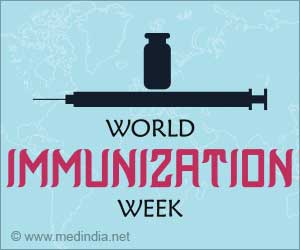Highlights
- Low use of testing services in sub-Saharan Africa, particularly by men, is one of the key barriers for HIV prevention.
- New study states that giving women HIV self-tests promotes male partner testing.
- Half of the participants were given HIV testing self-kits.
- The other half were given invitation cards for testing at clinics.
- Results showed that self-tests led to 39.1% more partner testing.
Low use of testing services in sub-Saharan Africa, particularly by men, is one of the key barriers to meeting targets that UNAIDS has set for HIV prevention.
Moreover, efforts to encourage pregnant women and postpartum women to refer their partners for testing and to test as a couple, in order to help prevent mother-to-child transmission of HIV, have had limited success.
Statistics
- According to UNAIDS, there were approximately 36.7 million people worldwide living with HIV/AIDS at the end of 2015. Of these, 1.8 million were children (<15 years old).
- An estimated 2.1 million individuals worldwide became newly infected with HIV in 2015. This includes 150,000 children (<15 years).
- Most of these children live in sub-Saharan Africa and were infected by their HIV-positive mothers during pregnancy, childbirth or breastfeeding.
- According to WHO , sub-Saharan Africa is the most affected region, with 25.6 million people living with HIV in 2015.
- Sub-Saharan Africa accounts for two-thirds of the global total of new HIV infections.
Researchers enrolled 600 women seeking pregnancy and postpartum care at three facilities in Kisumu County, Kenya between June and October 2015.
Half the women (300) were given two oral fluid-based HIV self-test kits to take home, instructions on use, and were encouraged to give a test to their male partner or to test with their partner if they felt comfortable.
Positive Outcome of the Trial
Over the following three months, women were followed up to determine if their partner had self-tested or visited a clinic to test for HIV.
In the group that received HIV self-tests, 90.8% of partners were reported to have tested within 3 months of enrollment in the study.
In the comparison group, only 51.7% of partners were reported to have visited a clinic for HIV testing.
Based on these results, self-tests led to 39.1% more partner testing than the control group.
Moreover, 93% of women who had received the HIV self-tests said their partner found the test either "very easy" or "somewhat easy" to use.
Couples testing was also much more likely among women who received HIV self-tests; 75.4% of women given self-tests reported testing with their partner whereas only 33.2% in the comparison group tested with their partner.
"The promising results from this study suggest that secondary distribution of self-tests warrants further consideration as countries develop HIV self-testing policies and seek new ways to promote partner and couples testing," the authors say.
The study is limited, by its reliance on self-reported outcomes as well as the fact that roughly a third of women screened for participation in the trial declined to participate, in some cases because they reported a fear of violence that could result from offering a self-test to their partner.
References
- The Global HIV/AIDS Epidemic - (https://www.aids.gov/hiv-aids-basics/hiv-aids-101/global-statistics/)
Source-Medindia















